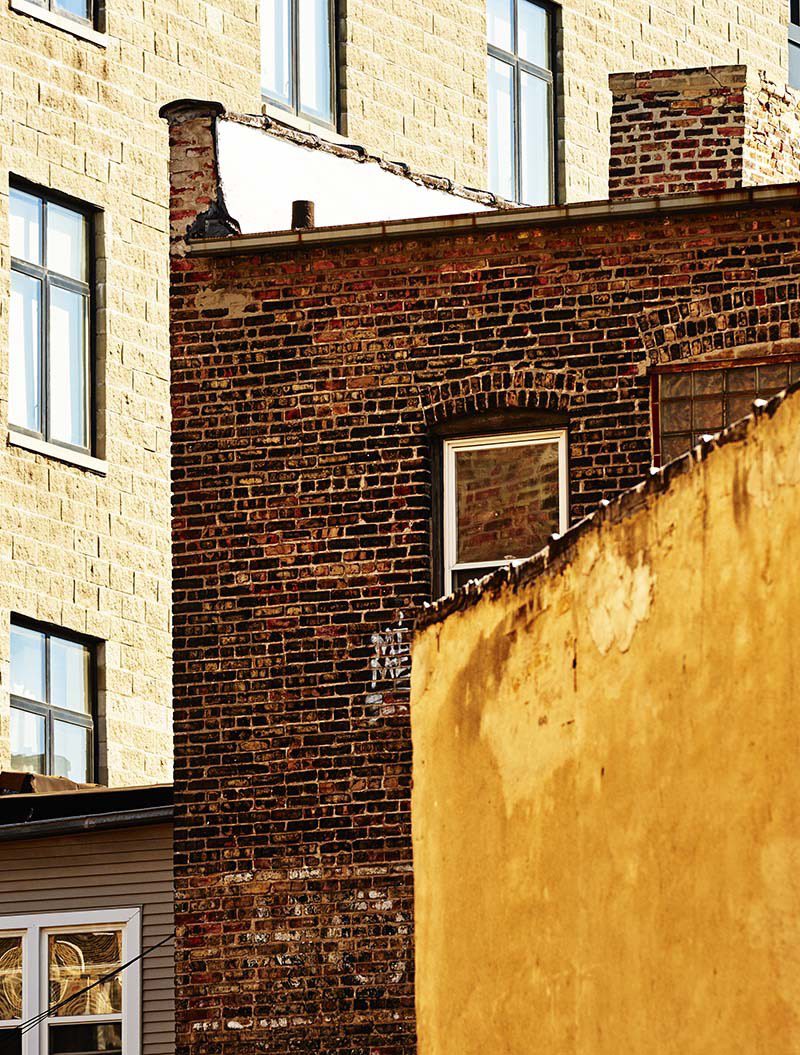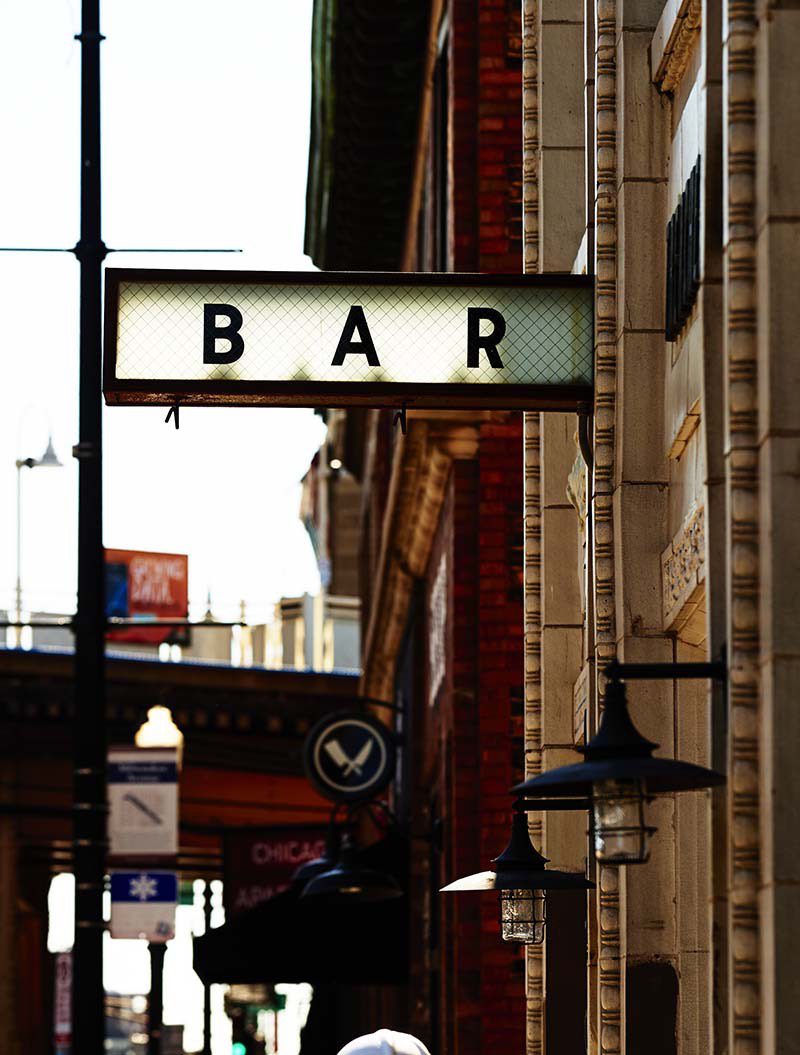About
Welcome To The Robey
2018 W North Ave, Chicago, IL 60647
(872) 315-3050
Experience the vibrant heart of Chicago at The Robey, where historic architecture meets modern design in the bustling Wicker Park and Bucktown neighborhoods. With 89 elegantly appointed rooms and a variety of dining options including Cafe Robey for all-day brunch and The Up Room for rooftop cocktails with panoramic city views, The Robey offers a unique blend of comfort, style, and culinary delights for every traveler.
Perched high above the big intersection of Damen, Milwaukee and North Avenues in an Art Deco masterpiece formerly known as the Northwest Tower—stretching 203-feet tall and the only skyscraper for miles—The Robey captures the storied spirit of Chicago: a bustling, ever-changing, big-shouldered town.
Taking its name from Robey Street – the north-south artery that would become Damen Avenue – it was our objective from the start to honor this skyscraper’s renowned past while bringing a fresh, new perspective to our 89 room hotel.
Originally designed as an office building in 1929 by the firm of Perkins, Chatten, & Hammond, each of the hotel’s rooms, lobby and roof spaces were transformed by Belgian design duo Nicolas Schuybroek Architects and Marc Merckx Interiors.
I adore Chicago. It is the pulse of America.
SARAH BERNHARDT
We began by combining two historic buildings with two very distinct styles: the first, designed as an office building in 1929 by the firm of Perkins, Chatten, & Hammond, contains Tower Rooms, as well as a lobby and roof spaces—each transformed into understated elegance by Belgian design duo Nicolas Schuybroek Architects and Marc Merckx Interiors. In addition, we offer 20 multi-bed Annex Loft rooms and a multifunctional hall in the adjoining former Hollander Fireproof Warehouse built in 1905, an industrial-style space infused with boutique finishes and custom-designed furniture brought to life by DELORDINAIRE architects.
With 180-degree views of the city skyline, including tree-lined streets and the steel girders of L train stops, we welcome you to experience Chicago in a completely new context: where today’s design meets yesterday’s daring, with a little something always happening at night.
Way Back When
First incorporated into the city of Chicago back in 1837, the Wicker Park District sprang up around a verdant triangle of fountains and paths named after the park’s developers, Charles G. Wicker and his brother Joel H. Wicker. Soon the busy intersection of North, Milwaukee and Damen Avenues became the heart of the district.
As waves of immigrants moved in—first Irish, then German, Scandinavian, Polish and Jewish—the neighborhoods’ bakeries and grocery stores reflected its ever-changing residents’ tastes. And though the Great Chicago Fire of 1871 devastated the city, an influx of prosperous families to the area during the subsequent rebuild brought with them beautiful brick and stone homes that remain gems of the neighborhoods today.


Two Neighborhoods, One Love
There’s a reason people fall for Wicker Park—the neighborhood boasts some of Chicago’s most photographed Victorian homes and tree-lined streets (it is a Chicago Landmark District, after all). Plus, the bordering area of Bucktown—with its charming storefronts and artist community roots—creates an irresistible mix that continues to draw locals and visitors alike.
Luckily for The Robey, our doors sit right at the crossroads of these two eclectic communities and offer guests a stay steeped in the city’s history and culture, all within an afternoon’s walk.
THE HERE AND NOW
With roots firmly planted in the 19th century’s past, a visit to Wicker Park and Bucktown today reveals a thoroughly modern evolution: of-the-moment restaurants and galleries, cafes and studios, dotting the restored storefronts and sunny sidewalks. Not to mention, a cluster of easy-to-use public transportation like the iconic L Train.
We’ve got homegrown icons in spades. While some might compare the area to New York City’s East and West Villages, we think these twin neighborhoods are all Chicago Search record stores for Chi-Town musicians from Curtis Mayfield to Sam Cooke; browse bookstores for some of our most recognizable voices like Saul Bellow and Sandra Cisneros.
In our opinion, whether you’re in the mood for a nightcap or a morning Vinyasa class, there’s no better pocket of the city to go where the locals go and live like you’re never leaving.
Still want more time to explore our city? Extend your stay at The Robey here

Way Back When
First incorporated into the city of Chicago back in 1837, the Wicker Park District sprang up around a verdant triangle of fountains and paths named after the park’s developers, Charles G. Wicker and his brother Joel H. Wicker. Soon the busy intersection of North, Milwaukee and Damen Avenues became the heart of the district.
As waves of immigrants moved in—first Irish, then German, Scandinavian, Polish and Jewish—the neighborhoods’ bakeries and grocery stores reflected its ever-changing residents’ tastes. And though the Great Chicago Fire of 1871 devastated the city, an influx of prosperous families to the area during the subsequent rebuild brought with them beautiful brick and stone homes that remain gems of the neighborhoods today.

Two Neighborhoods, One Love
There’s a reason people fall for Wicker Park—the neighborhood boasts some of Chicago’s most photographed Victorian homes and tree-lined streets (it is a Chicago Landmark District, after all). Plus, the bordering area of Bucktown—with its charming storefronts and artist community roots—creates an irresistible mix that continues to draw locals and visitors alike.
Luckily for The Robey, our doors sit right at the crossroads of these two eclectic communities and offer guests a stay steeped in the city’s history and culture, all within an afternoon’s walk.
THE HERE AND NOW
With roots firmly planted in the 19th century’s past, a visit to Wicker Park and Bucktown today reveals a thoroughly modern evolution: of-the-moment restaurants and galleries, cafes and studios, dotting the restored storefronts and sunny sidewalks. Not to mention, a cluster of easy-to-use public transportation like the iconic L Train.
We’ve got homegrown icons in spades. While some might compare the area to New York City’s East and West Villages, we think these twin neighborhoods are all Chicago Search record stores for Chi-Town musicians from Curtis Mayfield to Sam Cooke; browse bookstores for some of our most recognizable voices like Saul Bellow and Sandra Cisneros.
In our opinion, whether you’re in the mood for a nightcap or a morning Vinyasa class, there’s no better pocket of the city to go where the locals go and live like you’re never leaving.
Still want more time to explore our city? Extend your stay at The Robey here